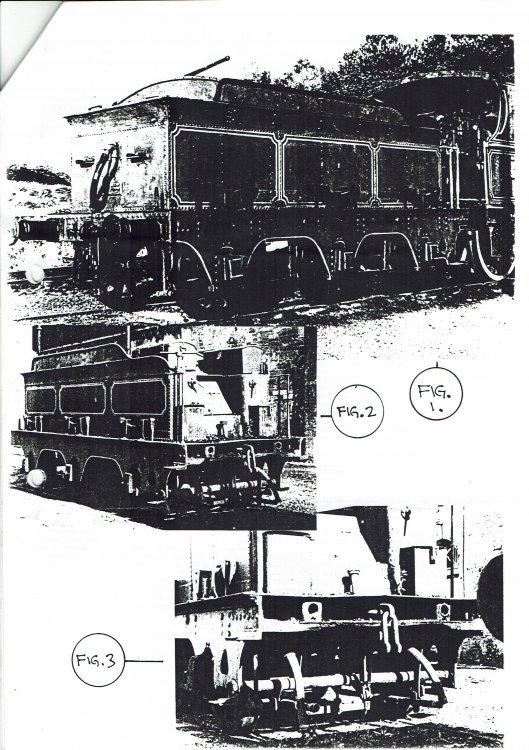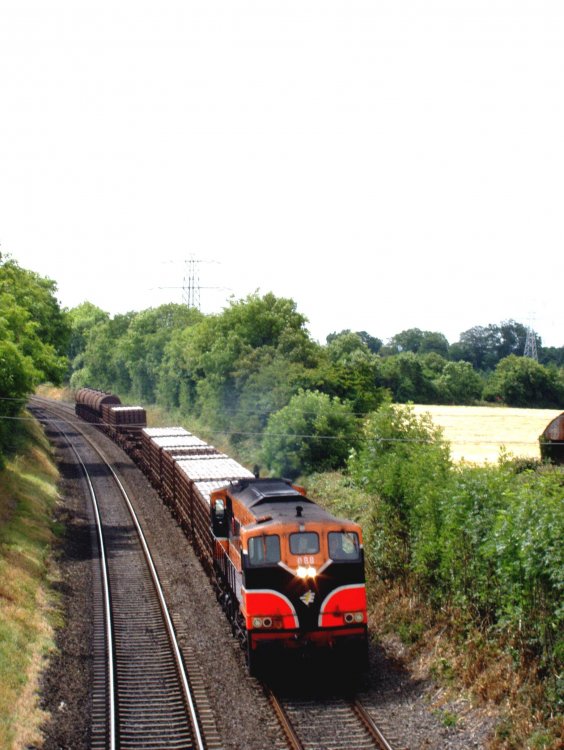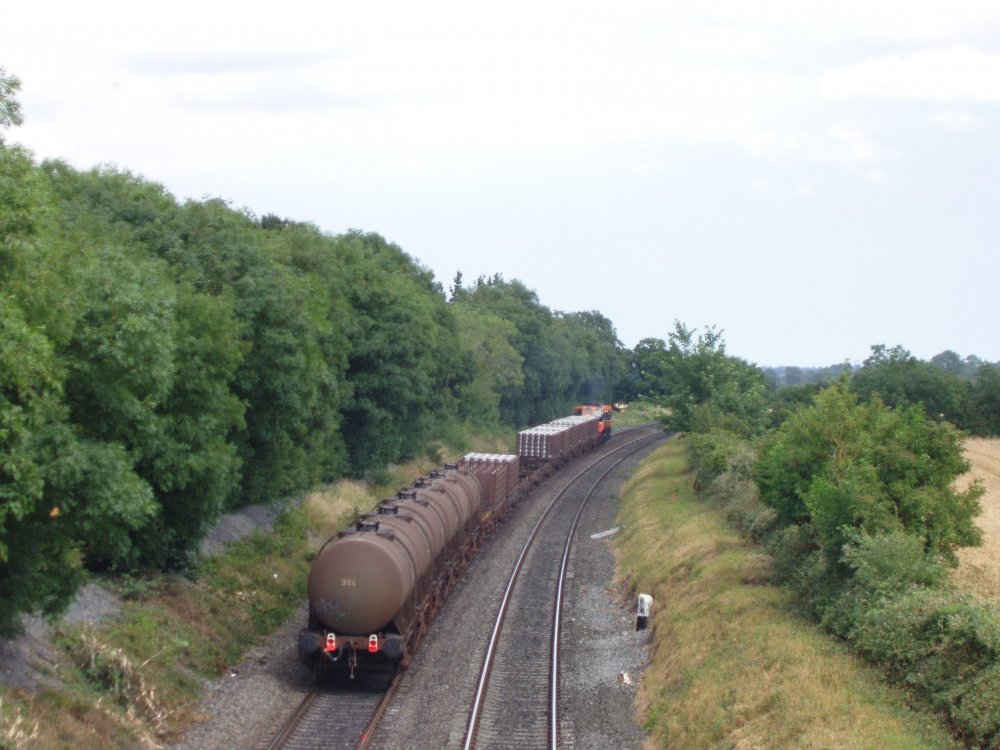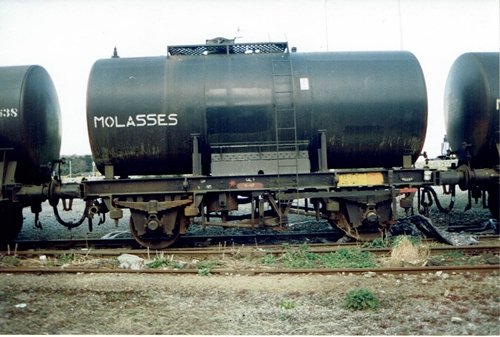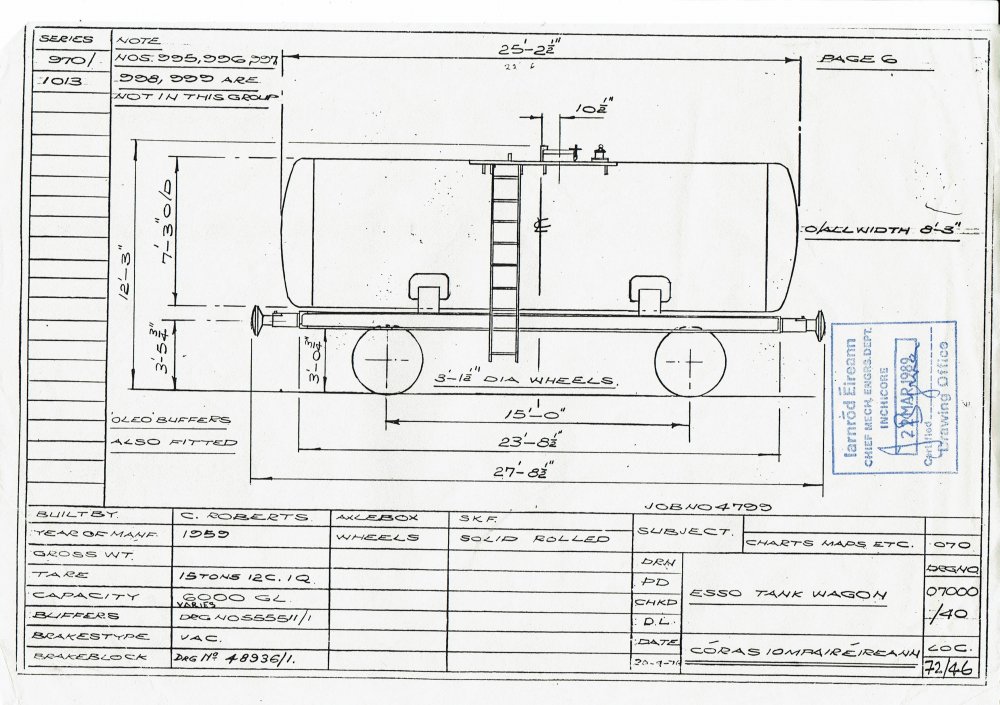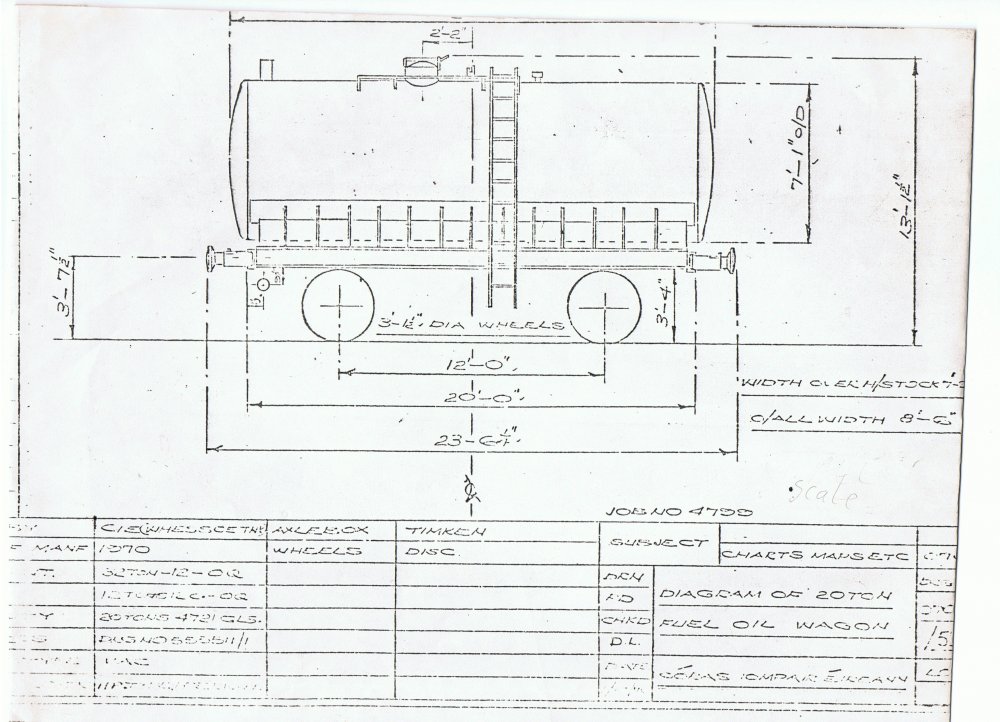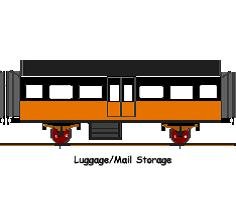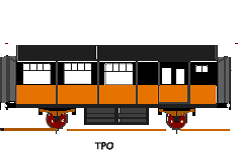-
Posts
4,855 -
Joined
-
Last visited
-
Days Won
119
Content Type
Profiles
Forums
Events
Gallery
Blogs
Store
Community Map
Everything posted by Mayner
-

CIE Laminate Coaches - Worsley Works - ECMbuild in 4mm
Mayner replied to murrayec's topic in Irish Models
Eoin Lining the interior of the sides with plasticard appears to be a new development in terms of 4mm coach building. Did you cut out the window opening by hand or use some form of profile cutter? -
Ernie Shepherd's Cork Bandon & South Coast Railway includes a chapter on the Timoleague & Countmacsherry and includes a number of photos of stations, locos and rolling stock. https://www.amazon.com/Cork-Bandon-South-Coast-Railway/dp/185780198 The Ian Allen "Irish Railway Pictorial" series includes Rails around Cork & Kerry ISBN(10) 0 7110 3158 4 & Great Southern Railways ISBN (10) 0 7110 3150 9 include photos of the T&C Irish Railways in Colour a Second Glance (Midland Publishing) 1995 ISBN 1 85780 019 2 includes 7 colour photos of the line in CIE days. https://www.amazon.co.uk/Irish-Railways-Colour-Second-1947-70/dp/1857800192
-
It may be easier to find a CNC Profile Cutting business rather than jumping in at the deep end with buying a laser profile cutter. Businesses that carry out laser or water jet profile cutting for industry may be prepared to take on one off and low volume work for individuals, a company like York Modelrail https://www.yorkmodelrail.com/ is probably the best bet option for an in-experienced designer. http://www.cnclasercutting.ie/materials/ http://cirruslaser.co.uk/cutting-services Members of our local Large Scale modelling group have had plasticard coach sides cut using water jet cutting for approx $20 for a pair of sides and have also used water jet cutting rather than CNC milling for profile cutting parts in metal for large scale locos. CAD takes time to master AutoCAD or SolidWorks are professional level programmes which is reflected in their pricing, Draftsight is a more reasonably priced option for 2D drafting for the casual designer, while Sketchup is widely used for 3D modelling by amateurs and professionals alike.
-
I am planning to use Lenz LS110 Accessory Decoders to control Seep Point motors. Does anyone know if it is feasible to control two point motors used in a crossover from a single accessory decoder output? The unit appears to be unable to reliably operate a crossover with the pulse set at the default 0.1 sec. Would increasing the pulse duration and or increasing supply voltage above 15V/1A DC improve operation or potentially burn out the decoder? The decoder load capacity 1.7A continuous 3A peak (max 20 sec) (individual & whole decoder) supply voltage 8-25V pure DC or 8-18v AC or pulsing AC. The pulse duration for solenoid operation can be varied between 0.1 & 15 Sec.
-
Omagh had a loco depot at the Dungannon end of the station There is a interesting tradition in New Zealand of local volunteer groups exhuming and restoring old steam locos that were dumped into rivers 60-90 years ago. https://en.wikipedia.org/wiki/NZR_K_class_(1877) There is a great sense of self reliance in rural New Zealand most of the recovery and restoration of dumped locos is usually self financed and are carried out by groups that don't fit into the general category of railway enthusiasts or preservation societies Perhaps the boiler could become a s rallying point for a similar group in Omagh.
-
Pre-1900 would certainly fit in with the coaching stock in the 1st photograph. The 3rd & 4th coaches in the train look like 4 wheel coaches which had all gone by the 1925 Amalgamation. The GSWR & GSR operated through Dublin-Cobh boat trains in conjunction with the Transatlantic Ocean Liner services. Postcard of 500 Class 4-6-0 on Queenstown Mail. Does anyone know when the Transatlantic Boat Trains ceased running?
-
1905 Old & new Postcard
-
OO7 or James Bond christened by passengers on an IRRS special. In the late 1970s a returning Dublin-Youghal IRRS special was blocked at Thurles by an up passenger that failed at Templemore. 007 the Thurles pilot loco ran wrong road to Templemore to haul the failed train to Heuston.
-
Loco in the 1st photo most likely to be a 60 Class (GSR/CIE D14) the standard GSWR passenger loco of the late 19th Century or possibly the slightly smaller 52 Class (GSR D17) 60 Class No 95 52 Class No 59. The ex GSWR 4-4-0s went through major re-building which considerably changed their appearance after the 1925 re-building Both classes were re-built by the GSR & CIE with superheated boilers and larger/more modern cabs and lasted into the late 1950s. 60 Class No 89 rebuilt with superheated boiler, modern cab and raised running board. 60 Class 60 with rebuilt with superheated boiler. 52 Class 52 rebuilt with superheated boiler. As Eoin indicated no rtr model or kit is available for these locos and the Hornby T9 is a much larger loco and require considerable work. A Hornby 2P or Triang-Hornby L1 https://www.ebay.com/itm/HORNBY-R2099B-LMS-BLACK-4-4-0-CLASS-2P-LOCOMOTIVE-645-MINT-BOXED-nh/332408690831?epid=553125494&hash=item4d651a188f:g:5LEAAOSwrnNXP2 could be converted into one of the larger 321 Class 4-4-0s which were used on the Dublin-Cork main line and may have worked into Cobh 321 as rebuilt with superheated boiler modern cab and raised running board
-
JHB I would not dismiss the idea of 186s tender having run behind a 400 Class 4-6-0 as a myth. This type of tender appears to have been the standard for larger locos built from 1900 to the early 1920s including the four Inchacore built members of the 400 Class 400-402 & 406. Larger tenders were introduced for use with the six Armstrong Whitworth built members of the 400 Class & the 500 Class from 1922 onwards. 407 running with a 3345 gal tender similar to 186 before rebuilding in 2 cylinder form in 1937. This loco was the last survivor of the Class in its original 4 cylinder form before re-building in 1938 402 rebuilt in 2 cylinder form with 4500 Gal tender. The GSR scrapped a significant number of larger more modern GSWR locos during the Depression era including 3 members of the 400 Class, 6 inside cylinder 4-6-0s, and 5 large 4-4-0s and inside cylinder 2-6-0 locomotives. This scrapping would have freed up a number of 3345 gallon tenders for use with J15s & D14 4-4-0s and would have been useful on long distance work. D14 No 60 with 3345 gal tender
-
Tenders on 101 Class and small GSWR tender locos were not fitted with coal raves or extension plates in GSWR days. 134 looks very tempting with 4' boiler, cast iron funnel and wheels! 186s tender is of much more modern design than the loco and may have been built for use with the 400 Class 4-6-0s during the early 1920s. The chute arrangement on SSM kit appears to be an RPSI modification, the 1864 Gallon GSWR tenders had a low shovelling plate and appear to have had a snaphead riveted flat tank top/coal plate to make life difficult for the fireman/coal trimmers.
-
-
-
Most likely 26628-31 & 26636-26652 series tank wagons visually similar to the 26570-26589 tank cars built for oil traffic to the cement factories. Short of scratchbuilding a wagon the Bachmann 14t anchor mounted tank wagon although shorter would make a passable model of the tank wagons used by CIE for heavy fuel oil traffic to the cement factories and Ballinacourty.
-
The CIE diagram indicates that the length of the tank barrel or underframe length was not altered when the wagons were re-gauged for use in Ireland. Presumably 995-999 were the re-gauged Type B tank wagons which had a shorter tank barrel than the Type A wagons. Before block trains were introduced in the mid 1970s these wagons ran individually or in small cuts in loose coupled goods trains to Sligo & Mayo. The J Hangers may have been fitted at some stage after the wagons entered service, I had a photo of one of these wagons at Inchacore with the same same suspension and tank mounts as the Heljan model These may have been the first modern Irish private owner wagons an some may have ran in ESSO livery when 1st introduced in the late 1960s. The CIE traffic (Burma & Cement Ltd) and stores oil wagons were considerably shorter than the ESSO wagons running on the "standard" 20T wagon underframe. JHB Unless the Dugort Harbour line survived into the mid late 70s the CIE stores oil wagon is a bit too modern. Before the introduction of the "modern: stores oil wagons CIE transported its fuel oil in a motley collection of company owned and private owner shortwheel base tank wagons. Many of these tank wagons were basically 5'3" gauge versions of standard British tank wagons similar to the Bachmann rtr models.
-
Something I hadn't noticed. Heljan have introduced a OO gauge model of the Charles Roberts Class A tank wagon, ideal for the ESSO North Wall-Sligo & (Oranmore) Claremorris oil trains. https://www.hattons.co.uk/203086/Heljan_1154_4_wheel_A_tank_44290_in_Esso_grey_with_1980s_Hazchem_symbols_weathered/StockDetail.aspx Lot simpler than trying to extend the tank barrel on the old Dapol/Airfix tank wagon Apart from re-gauging the wagons appear to have ran in original condition until CIE fitted anchor strips between the tank barrel and underframe at some stage post 1980. ESSO also imported a small number of Class B tank wagons. I saw one North Wall late 1990s in same livery grey barrel and red solebars as the Class A wagons presumably converted to carry Class A (petrol or diesel rather than heavy fuel oil.
-
The 1970s was a revolutionary period for CIEs freight operation during which traditional loose coupled goods trains were replaced with fixed formation Liner Trains made up of high capacity long wheel based wagons (by Irish standards). Apart from sugar beet loose coupled goods trains were eliminated by the late 70s and traditional unbraked wagons and vans withdrawn from service and scrapped. General goods traffic was transported by container on scheduled Liner Trains between the major centers. Bulk or single commodity traffic like bagged and bulk cement, fertiliser, oil and mineral ores were transported in block trains of specialist wagons. Mixed consists of different types of wagons sometimes operated where there was not enough traffic for a particular company, this became more common during the 1990s. Heljan have released a OO gauge model of the ESSO Class A tank wagon https://www.hattons.co.uk/203086/Heljan_1154_4_wheel_A_tank_44290_in_Esso_grey_with_1980s_Hazchem_symbols_weathered/StockDetail.aspx CIE re-gauged a batch of these wagons for ESSO oil traffic from Dublin Port to Sligo, Claremorris. Irish Freight Models https://www.facebook.com/Irish-Freight-Models-1252098201500518/app/251458316228/ produce rtr models of many of the more modern wagons.
-
Keeps taking me back to when I last worked in Dublin around 2002 our offices were at the corner of Grand Canal Street & Harmony Row. The staff canteen was on the 2nd floor overlooking the line between the Boston Yard and Pearse Station, explored the area around the Pearse Station and the Dock during lunch time. Amazingly our relatively new 1990s? brick clad office building which was in keeping with the existing street scape appears to have been demolished and replaced with a more modern open plan office block with curtain wall cladding. Interesting times 201s and MK3 Push Pull stock replaced the 2700 railcars on Northern Outer suburban services were stored during off peak periods on the running loops between Pearse and Grand Canal Dock, the occasional single 141 working Connolly-Rosslare passenger services if an 071 was not available. On weekends the Platin-Cork Bulk cement train regularly ran to the Boston to run round as the North Wall freight yards were normally closed Saturday afternoons and Sundays. Happy Times!
-

CIE Laminate Coaches - Worsley Works - ECMbuild in 4mm
Mayner replied to murrayec's topic in Irish Models
The Laminates & the Tin Vans were of modular pre-fabricated construction that could be assembled quicker and required less skill compared to the timber framed coaches built by CIE between 1951 &55. The introduction of the Park Royals & Laminates allowed CIE to speed up its carriage building construction during the mid-late 50s introducing a greater number of coaches more quickly that could be achieved with traditional carriage building techniques and the available pool of labour. Ironically Inchacore returned to traditional timber frame carriage construction in the early 1960s for the final batch of coaches designed and built by CIE shortly before the introduction of the Craven Coaches. Apparently it was intended to re-body the Laminates after 15-20 years (use due to the limited design life of the composite aluminium insulation body panels) but the concept of re-bodying the coaches became obsolete with the introduction of the stress skinned MK2 coaches from the 1960s onwards. Interestingly some Laminate coaches were re-skinned with new sides and windows in the early 80s presumably as a stop gap measure to keep sufficient coaches in services until enough MK3 were in services to allow Cravens & Park Royals to be cascaded to suburban and secondary services. I was quite surprised to see several Laminate coaches stripped down to underframes, ends and roof during a visit to Inchacore in the early-mid 80s, the coaches looked distinctly odd with the sides and interior removed and roof supported by the ends and underframe. -
The owner of Markits has been in contact to advise that he is currently manufacturing axles for OO & EM and would be prepared to manufacture axles to suit the Irish Broad Gauge. This brings up few questions in considering if the idea is worth pursuing 1. Track & Wheel Standards. 21mm to OO standards or a reduce the gauge to 20.2 as advocated by Martyn Wynne or even 20mm to allow the wheel sets fit without having to within having to widen the body on the majority of Irish inside cylindered steam locos or move out the cylinders and outside valve gear on more modern locomotives Reducing the gauge to 20.2mm or possibly 20mm and adapting OO gauge standards would also allow increased sideplay (slop) between wheels and chassis. This would remove one of the major barriers to Irish Broad gauge modelling fitting a continuous run layout into the average Irish bedroom or garden shed. 2. Demand. Is there sufficient demand for a Markits "Irish OO" gauge axle to commission an order of 500-1000 driving axles? 3. Take up of broad gauge modelling. Is the lack of a Markits "Irish Broad Gauge axle a significant barrier to people modelling the wider gauge. 3. Potential level of interest in an Irish OO gauge. Would more people be interested in taking up broad gauge modelling if a continuous run layout could be fitted into the same or slightly large space than a similar OO gauge layout? Running clearances Markits wheelsets and some loco kits. A high proportion of 21mm gauge modelers work to EMF or P4 wheel and track standards. Markits wheels are designed for OO gauge use and are wider than the 2.28 maximum recommended for EMF. This leads to essentially the same problem that lead to the adaptation of British N, TT and OO gauge due to limited/negative clearances between wheels and splashers or valve gear on outside cylinder locos even when the back to back is set to 19mm to allow OO gauge clearances. Track gauge 21mm 21mm 20.3mm (Martyn Wynne Irish EM) 20.3 mm(Irish OO?) Standard OO EMF EMF OO Back to Back 19 19.3 18.6 18.3 Markits wheel width 2.5 5 5 5 5 Overall width wheelset 24 24.3 23.6 23.3 Loco Width between splashers Clearance Clearance Clearance TMD/SSM J15 24.3 0.3 0 0.7 1 TMD/SSM S 28 5 3.7 4.4 4.7 SSM GG/SG2 25.3 1.3 1 0.7 2 JMD 650/Ks 26 2 1.7 2.4 2.7
-
I am planning a limited release of the kits in May-June 2019. I am looking at a minimum run of 4 of each type in order to re-release the kits. Cost likely to be $150NZ per van + $30 shipping. Kits are etched brass, with whitemetal, brass or resin castings, designed for OO or 21mm gauge. OO Gauge NMRA110 wheels included I will consider a supplementary fret to cover some of the detail variations between vans including blanked out windows, recessed doors on heating and luggage vans. Please advise me if you are interested. 1. 2. 3. Tin Van Wallpaper
-
The ballast pit at Lisgoole Town on the late Richard Chowns Castle Rackrent system is a good example, simple siding into a shallow gravel pit dug into the side of an Esker or dry river bed where gravel accumulated. Wagons would be 1-2 plank dropside wagons rather than hoppers, loading most likely by hand from the face. Some pits may have had a small steam driven crusher, screens and washing plant feeding a small overhead bunker. https://highlandmiscellany.com/tag/castle-rackrent/ Pretty much a pre-amalgamation thing as the larger companies line the GNR, GSWR,MGWR & possibly DSER used crushed stone ballast from large quarries like Goraghwood, Lisduff and Lecarrow from the early 1900s. The GSR & CIE used the Newbridge ballast pit as a dump for spent ballast and general rubbish apparently up to the 1970s.
-
We are caught in a pincer movement with the Government trying to get a return on the $1b+ of taxpayers money pumped into funding fibre networks throughout the country, the network companies trying to get us to convert to wireless or cable in order to abandon its copper networks. Broadband is reasonable we don't use our monthly quota, we try to minimise our 9 year old daughters "screen time" IT exposure, we hate to throw anything out so analogue TVs hooked up to Freeview digital receivers, wife records kids TV programmes and wierd continental movies and gets huge enjoyment trying to manager her ever growing collection of recordings on different media. Personally I prefer to just play trains
-
We are being constantly being bombarded with apparently mouth watering offers to transfer from copper to fiber or wireless. The ulterior motive is that our telephone network providers want to abandon its legacy copper based systems Being Luddites our existing plan is more than sufficient for our needs and we want to retain a copper land line for international phone calls or as a back up in an emergency especially if wireless networks are off line as a result of power cuts or natural disaster
-
I have ran out of castings for the handbrake wheels, but no shortage of end castings. It might be worth e-mailing enquiries@dartcastings.co.uk as they may have a stock of handbrake castings in search of a potential market. The MGWR van parts including axleboxes, springs, roof vents, handbrake wheels and end castings were likely to be cast from the same mould
.png.c363cdf5c3fb7955cd92a55eb6dbbae0.png)



